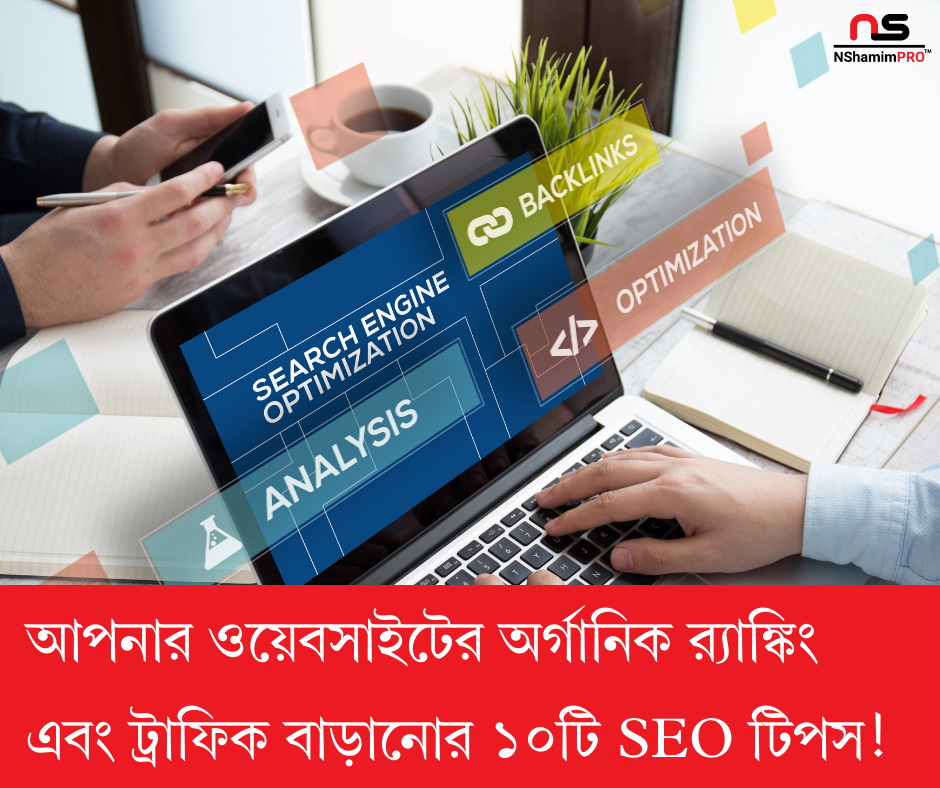Boosting your website’s organic rankings and driving more traffic require a strategic approach to SEO. Here are ten essential tips that can help you achieve significant improvements:
1. Prioritize Targeted Keyword Research
- The foundation of successful SEO is understanding what your audience is searching for. Use tools to identify high-value keywords with reasonable competition. Aim for keywords that align closely with user intent, ensuring your content meets their needs effectively.
Example: If you run a fitness blog, targeting long-tail keywords like “best exercises for lower back pain” may yield better results than general terms like “exercise.”
2. Conduct Keyword Gap Analysis
- Analyze the keywords that your competitors are ranking for, but you are not. This strategy helps you uncover opportunities to create content that fills these gaps, potentially capturing traffic that your competitors currently dominate.
Example: If a competitor ranks for “healthy meal prep ideas,” but you don’t, it’s a good idea to create content around that topic to attract similar audiences.
3. Align Content with Search Intent
- Every search query has an intent behind it, whether informational, transactional, or navigational. Your content should directly address this intent. By matching your content to the specific intent of your target keywords, you increase the likelihood of satisfying user queries and improving rankings.
Example: For a keyword like “buy running shoes,” your content should focus on product recommendations and purchase guides rather than just general information about running.
4. Offer Unique Perspectives
- With so much content available, offering something different can set your website apart. Whether it’s new research, personal experiences, or a unique angle on a common topic, this uniqueness encourages users to engage more with your content and can also attract backlinks.
Example: Instead of writing a generic article on “how to meditate,” share a personal journey on how meditation has transformed your life, adding a unique touch to a widely covered topic.
5. Improve Content Readability
- High-ranking content isn’t just about what you say; it’s also about how you say it. Ensure your content is easy to read by using short paragraphs, bullet points, and subheadings. This not only improves user experience but also makes your content more scannable for search engines.
Example: Break down complex topics into digestible sections with clear, concise language and plenty of visual aids like charts and infographics.
6. Focus on E-E-A-T (Experience, Expertise, Authoritativeness, Trustworthiness)
- Google’s emphasis on E-E-A-T is growing, especially in industries like health and finance. Demonstrating experience, expertise, authority, and trustworthiness in your content is key to ranking higher. Include author bios, cite reputable sources, and showcase your qualifications to build credibility.
Example: In an article about financial planning, including case studies, expert opinions, and author credentials can boost the content’s authority and trustworthiness.
7. Optimize for Featured Snippets
- Featured snippets are a prime piece of real estate in search results. Structure your content to answer common questions directly, use lists, and ensure concise, accurate responses that Google can easily pull into a snippet.
Example: Create a “How to” guide with numbered steps or a clear Q&A format to increase your chances of being featured.
8. Create Short, Descriptive URLs
- Your URLs should be concise and include your target keyword. A well-structured URL helps both users and search engines understand the content of the page. Avoid long, complicated URLs that are hard to read or remember.
Example: Instead of www.yourwebsite.com/12345/abcde-fghij-klmn, use www.yourwebsite.com/healthy-meal-prep-ideas.
9. Enhance Page Load Speed
- Page speed is a critical factor for both user experience and SEO. Faster loading times reduce bounce rates and increase user engagement. Optimize your site by compressing images, leveraging browser caching, and minimizing JavaScript to improve speed.
Example: Use tools like Google PageSpeed Insights to identify speed bottlenecks on your site and get specific recommendations for improvement.
10. Strategically Implement Internal Linking
- Internal links are essential for guiding users through your website and passing authority to key pages. Use descriptive anchor text to link related content, helping search engines understand the context and value of linked pages.
Example: In an article about “weight loss tips,” link to related content like “best diets for weight loss” or “exercise routines for beginners” using those specific phrases as anchor text.
By applying these SEO tips, you can significantly improve your website’s visibility in search engines, attract more organic traffic, and engage your audience more effectively. Consistent application of these strategies will lead to better rankings and more successful outcomes for your online presence.





